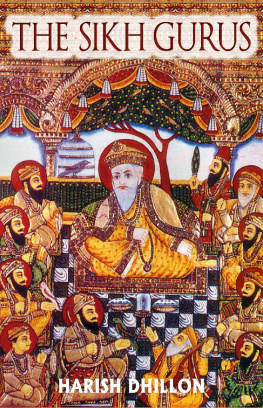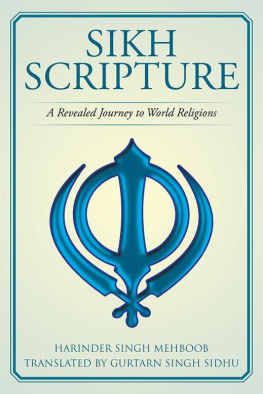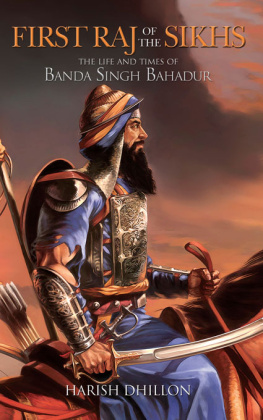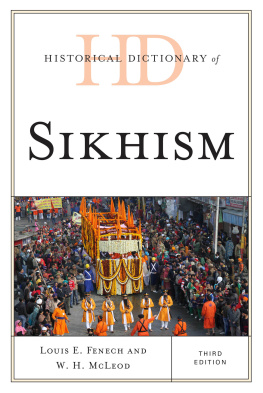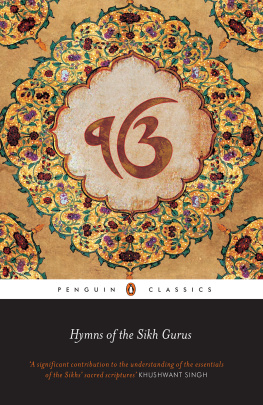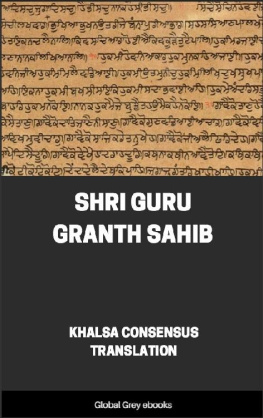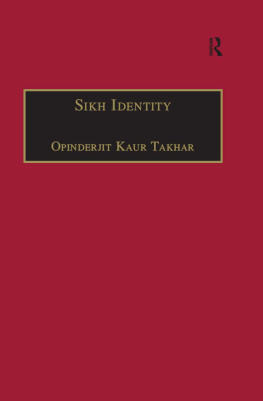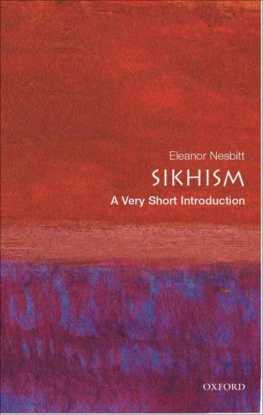Hay House Publishers (India) Pvt. Ltd.
Muskaan Complex, Plot No.3, B-2 Vasant Kunj, New Delhi-110 070, India
Hay House Inc., PO Box 5100, Carlsbad, CA 92018-5100, USA
Hay House UK, Ltd., Astley House, 33 Notting Hill Gate, London W11 3JQ, UK
Hay House Australia Pty Ltd., 18/36 Ralph St., Alexandria NSW 2015, Australia
Hay House SA (Pty) Ltd., PO Box 990, Witkoppen 2068, South Africa
Hay House Publishing, Ltd., 17/F, One Hysan Ave., Causeway Bay, Hong Kong
Raincoast, 9050 Shaughnessy St., Vancouver, BC V6P 6E5, Canada
Email: contact@hayhouse.co.in
www.hayhouse.co.in
Copyright Harish Dhillon
Fully Revised Edition (13th reprint) 2015
The views and opinions expressed in this book are the authors own and the facts are as reported by him. They have been verified to the extent possible, and the publishers are not in any way liable for the same.
All rights reserved. No part of this publication may be reproduced, by any mechanical, photographic, or electronic process, or in the form of a phonographic recording, nor may it be stored in a retrieval system, transmitted, or otherwise be copied for public or private use other than for fair use as brief quotations embodied in articles and reviews without prior written permission of the publisher.
Inserts: Painting of Guru Nanak, Guru Amar Das, Guru Har Gobind, Guru Tegh Bahadur and Guru Gobind Singh
courtesy: Sobha Singh Art Gallery, Andretta, Himachal Pradesh
ISBN 978-93-84544-44-7
ISBN 978-93-84544-45-4 (e-book)
Printed and bound at
Saurabh Printers, New Delhi
To my children:
Jason, Priya, Naina, Jai, and
of course Tegh
This book began its journey in 1995. It was commissioned by Shailender Choudhry of Student Book Store, but by the time it was completed, he had developed cold feet about the project. After a hiatus of two years, Ashok Chopra, (then the publishing director at UBSPD, New Delhi) stepped in and decided to publish it. The rest, as far as I am concerned, is history. Over a period of thirteen years, it has had twelve reprints, the last reprint being as recently as 2012. Then Ashok decided to step in again and bring out an upgraded edition of the book, the thirteenth reprint. So my acknowledgements must begin with a strong expression of gratitude to my friend and mentor, Ashok Chopra, for his unswerving faith in my writing ability.
I am greatly beholden to Dr Wazir Singh for editing the text meticulously and also for suggesting improvements.
I would like to express my grateful thanks to Dr S.S. Dhillon, for obtaining all the source-material for me, to Sohan Singh, who was my PA at Yadavindra Public School when I was the principal there for deciphering my terrible handwriting and typing out the various drafts way back in 1995, and to the late Neeta Sibia, one of my former colleagues, for patiently reading through each draft and giving me her quiet but very valuable advice. My grateful thanks are also due to K.S. Bhalla, for having gone through the text very carefully, word by word, and suggesting important and meaningful corrections and modifications. And finally, a very big thank you to all at Hay House for having given me a beautiful book.
During the time of the founder of the Sikh religion, Guru Nanak (1469-1539), the Punjab we know now was a much bigger geographical unit. In the north, this area was marked by the high Himalayas, the Hindu Kush mountain range, and the mountains of Afghanistan. In the west the river Indus flowed. The south was marked by the desert of Rajasthan. The eastern boundary was not very clearly defined. But, broadly speaking, Punjab was a region of large plains, watered by the rivers Jhelum, Chenab, Ravi, Sutlej, and Beas the five main tributaries of the Indus (Punjab means the land of five waters).
This is the area where the Indus Valley Civilization, one of the oldest civilizations in the world, was born. Stone implements dating back to almost 5,00,000 years have been found here. Copper and bronze implements dating back to 25,000 years have also been unearthed along the banks of the Indus. The ruins of the Harappan culture, found at Ropar, proved the existence of a flourishing urban culture, dating as far back as 2500 BC. It was also in Punjab that the Aryans evolved the Vedic religion and composed the great works of Vedic and Sanskrit literatures.
The Aryans were followed by wave after wave of conquerors: the Greeks, the Bactrians, the Scythian tribes, and the Huns. After them, at the beginning of the eleventh century came tribes who differed greatly from one another but had one common factor: their religion, Islam. The Ghaznavis, the Ghoris, the Tughlaqs, the Suris, the Lodhis, and the Mughals all invaded North India and ruled it.
The Muslim tribes, when they had settled down in Punjab, directed much of their energies towards destroying nonbelievers. For over three hundred years, Islam and Hinduism existed side by side in Punjab, in a state of constant conflict. Hinduism had a pantheon of gods and goddesses who were worshipped in the form of idols, and a society that was based on the caste system, while Islam, which was rooted firmly in monotheism, abhorred idolatry and believed in the equality of all human beings.
Some attempts were made to bridge this divide. The Bhakti Movement preached that there was only one God and He was without any form or feature. They advocated that all men were equal and preached against the caste system. The Sufis, too, tried to bridge this divide. For the first time, music was introduced into Muslim religious practice. The Sufis welcomed non-believers both in their homes and in their mosques; and believed that all human beings had a right to observe their own form of worship.
But both these attempts were tentative in nature and any popular acceptance they may have found was destroyed by the Turko-Mongolic conqueror, Timurs invasion in 1398. The Muslim ruling class turned, once again, to killing and robbing the Hindu masses and to destroying their temples. The average Muslim believed that he could gain merit in the eyes of God by converting non-believers to Islam, even if it was at the point of the sword. Religious practices, in both Hinduism and Islam had degenerated into the performance of empty rites and rituals. The followers of Islam believed that circumcision, abstinence from pork, and, fasting during Ramzan were the attributes of a good Muslim. The Hindus meanwhile re-affirmed their belief in the merit of idol worship. They had an even more determined belief in the caste system; in the rituals of washing away their sins in holy rivers, eating vegetarian food, and wearing a holy thread (the janeu), all of which they felt would make them pure.
In 1499, Nanak embarked on an attempt to define the common thread running between the two religions, and to free religious practices from all the rituals and the hypocrisy that had come to surround them. His teachings were soon accepted by thousands of followers and the faith (known as Sikhism) became the youngest of the great religions of the world. By the time Guru Nanak died in 1539, he had a sizeable following, mainly in Punjab but also in little pockets along the routes he had taken on his Udasis.
Despite their increasing numbers, the Sikhs were not regarded as a threat by the Mughals, and were treated at best with a degree of cordiality or at the worst with a patronizing tolerance. Babur (1483-1530, the founder of the Mughal Empire in India) had known Guru Nanak personally and had found him to be a true man of God. This is why, not only had he ordered his release from imprisonment after the sacking of Saidpur (in Amritsar), but also deferred to Nanaks wish that all the other citizens be also released. His grandson, emperor Akbar had made a visit to Guru Amar Das, the third Gurus
Next page
